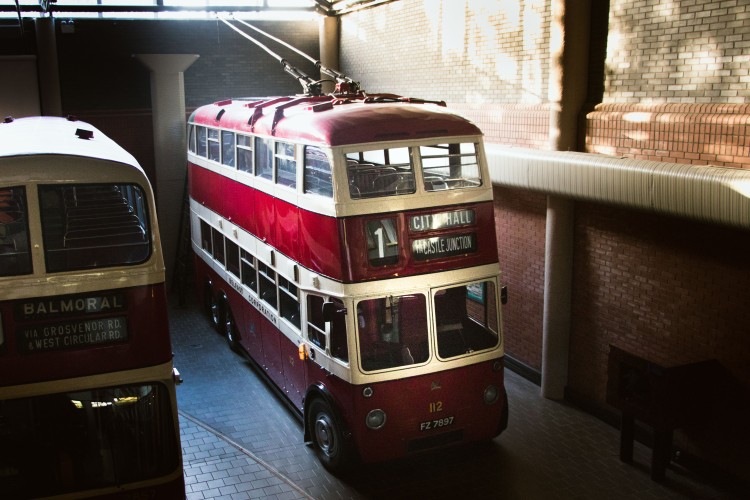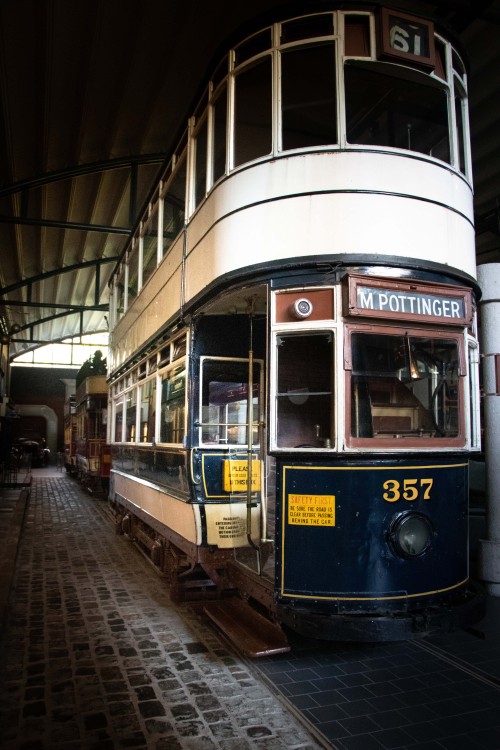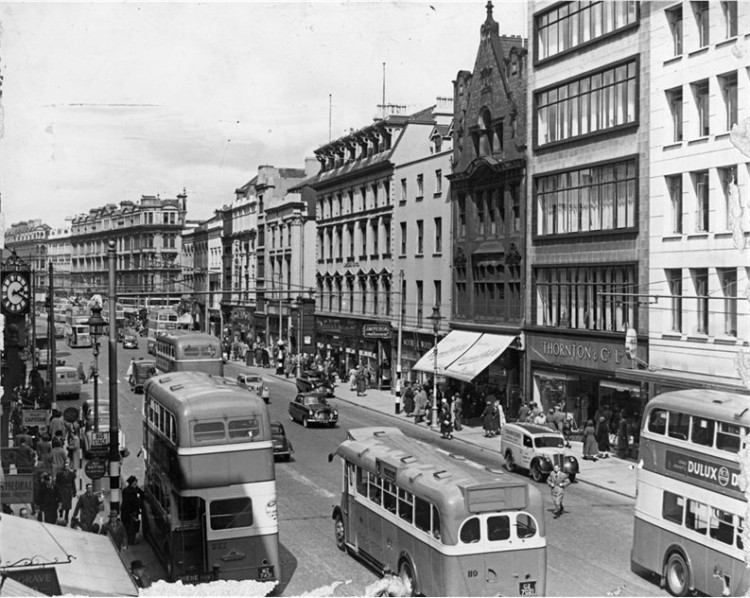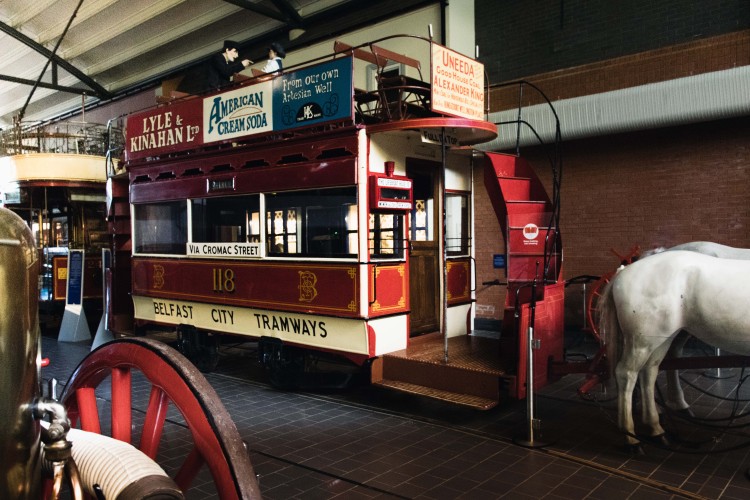
From Trams to Trolleybuses
Let’s explore the development of public transport in Belfast throughout the 20th century!
Let’s explore the developments of public transport in Belfast throughout the 20th century!
Our tram gallery showcases some of the most recognisable forms of transport that once carried people through the centre of Belfast and along the arterial routes into the city.
An Industrial City

View from entrance to Oxford Street, Belfast. Between 1906 and 1911.
Towards the end of the 19th century, Belfast was an industrial powerhouse boasting the largest ropeworks, shipyard and tobacco factory in the world. The city had grown to become a world-leading linen manufacturer.
With all of this development, it was necessary to provide a transport system that could support the increasing number of people travelling to and from their places of work each day.
Horse-drawn Trams
The earliest tramways were opened 28 August 1872 by Belfast Street Tramways with lines in York Street, Corporation Street, High Street, Castle Place, Donegall Place, Great Victoria Street, Clifton Street and Antrim Road from Carlisle Circus to Hopefield. An example of these early horse-drawn trams is on display in the Tram gallery, Tram No. 118.
Tramlines

Laying tramlines for the electric tramway 1905. Grand Metropole Hotel, Donegall Street, York Street junction in the background.
Around 50 trams were horse-drawn before the conversion to electric traction as exemplified by our own Tram 249. It first wheeled its way along Belfast’s streets in the 1890s and was converted into an electric tram in 1905. All trams at this point were open open-top but they quickly realised that the increased speed combined with poor weather conditions meant there was not adequate protection for passengers.
Tram 249 was one of seven that remained open-topped and it was last used for passenger services in 1948. It was converted into a snow plough and after being restored it was presented to the Belfast Transport Museum in 1955.
Electric trams

Electric trams in operation Donegall Street, York Street junction.
Belfast's electric trams were originally painted red and white. In 1928, a new livery of dark blue and white was introduced (although the former red and white was re-adopted in the late 1940s). Tram No. 357 retains the blue and white livery and was part of an order of 50 trams supplied in 1930. They were fitted out with sprung seats covered in brown leather and furnished with electric heaters.
During the Second World War, the downstairs seating was altered to increase capacity to cope with the surge in passenger traffic. Tram 357 was the last to travel on the network making its final journey from the Ardoyne Depot to Mountpottinger Depot on Saturday 27 February 1957.
Trolley buses
An experimental trolleybus service was initiated on the Falls Road in 1938 and the change over from tramcars to trolleybuses was implemented on the Cregagh, Castlereagh, Stormont and Dundonald routes in the early 1940s.

Trolley Bus No. 112 above is a 68 seater and it entered service from 1948 to 1968. You may notice "Belfast Corporation" and Belfast city's coat of arms are painted on the sides. The ongoing replacement of the trams with trolleybuses continued during the post-war years until Belfast eventually had the second largest fleet of trolleybuses in the United Kingdom.
Writing in the 1954 publication of ‘See Belfast by Trolley and Omnibus’, the then Chairman of the Belfast Corporation’s Transport Committee, Kennedy Leacock, described Belfast’s transport system as being ‘as up-to-date as any in the United Kingdom’.
The last trolleybus service was withdrawn in 1968 and all of the routes thereafter were operated by diesel buses.
The Troubles

A Corporation Bus, burnt out in a Belfast Street, after being hi-jacked.
During the Troubles, over 800 Ulsterbus vehicles were destroyed. Many were hijacked and set on fire to create barriers across the roads.
On 21st July 1972, on what became known as Bloody Friday, the I.R.A. left bombs across Belfast city centre, including the three bus stations. At the Oxford Street station, 6 people were killed and many more injured.
Diesel buses
This Fleetline diesel bus was one of seventy supplied in 1973. In November 1974, it was hijacked and burned and was rebuilt by Alexanders of Belfast who had originally built the bodywork. It was withdrawn from service in 1994 and presented to the Museum by Citybus in memory of all those who were injured or died during the Troubles.
Where we are today
Belfast’s public transport network has dramatically changed since the days of the trams and trolleybuses and the introduction of the new Glider service marks another milestone in the city’s transport history.







